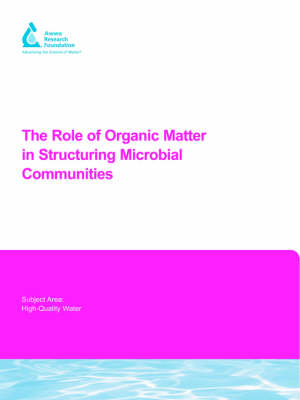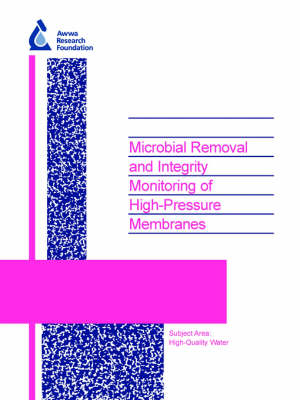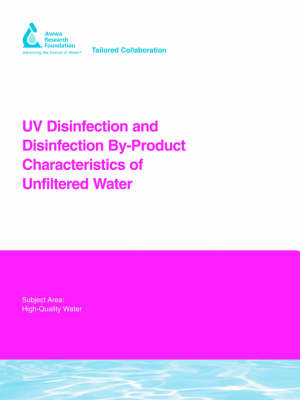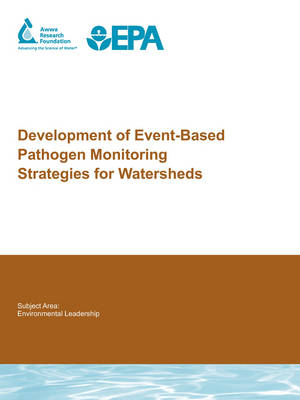Water Research Foundation Report
7 total works
Long-Term Variability of BDOM and NOM as Precursors in Watershed Sources
by David A. Reckhow, Paula L. Rees, Klaus Nusslein, Gladys Makdissy, Greg Devine, Teresa Conneely, Alison Boutin, and Darleen Bryan
Published 15 January 2008
All drinking water supplies contain some background NOM. In the early 1970s, NOM became a focus of concern as its central role in the formation of potentially carcinogenic disinfection by-products was recognized. DBPs, including the trihalomethanes (THMs) and haloacetic acids (HAAs), were found to result from the reaction of chlorine with NOM. Starting in the late 1970s, regulations were established by the USEPA with the intention of minimizing DBP exposure. These regulations stimulated the development of in-plant control strategies; however, far less attention has been paid to watershed management for precursor control.
The research objectives of this study were to (1) to investigate the sources, nature, and long-term variability of natural organic matter (NOM) and biodegradable organic matter (BDOM) in source waters, and (2) evaluate their impact on the formation of disinfection by-products (DBPs). Relationship Between NOM and DBP Formation Laboratory experiments were performed on a wide range of raw waters and NOM isolates. Disinfection by-product yields were measured along with some key physico-chemical parameters. These data were blended with literature data and processed using classical power function models.
The final product was a comprehensive assessment of DBP precursor densities in raw waters, and hydrophobic, mesophilic, and hydrophilic NOM fractions. Precursor Generation Laboratory tests were conducted on leachate from plant material and on pure solutions of lignin monomers. Using these data and a lignin degradation/characterization method, assessments were made of the role of lignin in DBP precursors and NOM. Other conclusions were drawn concerning the genesis of soluble precursors in forested watersheds. Modeling Synaptic surveys were conducted in watersheds from across the United States. Export modeling was conducted with the aim of attributing certain land use types or land cover to concentrations of specific DBP precursors.
The research objectives of this study were to (1) to investigate the sources, nature, and long-term variability of natural organic matter (NOM) and biodegradable organic matter (BDOM) in source waters, and (2) evaluate their impact on the formation of disinfection by-products (DBPs). Relationship Between NOM and DBP Formation Laboratory experiments were performed on a wide range of raw waters and NOM isolates. Disinfection by-product yields were measured along with some key physico-chemical parameters. These data were blended with literature data and processed using classical power function models.
The final product was a comprehensive assessment of DBP precursor densities in raw waters, and hydrophobic, mesophilic, and hydrophilic NOM fractions. Precursor Generation Laboratory tests were conducted on leachate from plant material and on pure solutions of lignin monomers. Using these data and a lignin degradation/characterization method, assessments were made of the role of lignin in DBP precursors and NOM. Other conclusions were drawn concerning the genesis of soluble precursors in forested watersheds. Modeling Synaptic surveys were conducted in watersheds from across the United States. Export modeling was conducted with the aim of attributing certain land use types or land cover to concentrations of specific DBP precursors.
Characterization of Total Organic Halogen Produced During Disinfection Processes
by David A. Reckhow, Guowei Hua, J. Kim, P. Hatcher, S. Caccamise, and R. Sachdeva
Published 13 April 2008
It has been known since the early 1970s that the application of disinfectants, especially chlorine, results in the formation of disinfection by-products (DBPs), most of which contain covalently bound chlorine, bromine, or iodine. These are known as the halogenated DBPs and they can be measured by a non-specific analytical method know as TOX. Despite nearly three decades of research there still remains a large fraction of DBPs that have not been identified. By comparing the TOX values with the halides attributed to known identifiable by-products (trihalomethanes [THMs], haloacetic acids [HAAs], etc.) we can estimate the unknown TOX (abbreviated here as UTOX) and better understand the formation of these unknown compounds.
The objectives of this research were to (1) determine the nature and chemical characteristics of the unknown fraction of the total organic halogen (UTOX) produced during chlorination and alternative disinfection processes (i.e., chloramination, chlorine dioxide, ozone disinfection); (2) assess the impact of treatment on removal of UTOX precursors; and (3) determine the best total organic halide (TOX) protocol to use with ion chromatography (IC) analysis for the purposes of discriminating between total organic chlorine (TOCl), total organic bromine (TOBr), and total organic iodine (TOI).
It was found that TOCl, TOBr, and TOI can be accurately and rapidly measured with conventional TOX instruments and an ion chromatograph. Iodide is rapidly oxidized to active iodine under a variety of treatment scenarios, and this leads to large amounts of TOI and measurable amounts of iodinated THMs. However, high levels of free chlorine can over-oxidize the iodide (forming iodate), which does not result in TOI formation. Substantial differences were noted in the tendency for various NOM fractions (hydrophobic, hydrophilic) to form specific classes of DBPs. This behavior was specific to the oxidant such that the major sources of DBP precursors for chlorination were not the same as those observed for chloramination. It was also found that corrosion control compounds can affect DBP distributions and halogen incorporation factors.
The objectives of this research were to (1) determine the nature and chemical characteristics of the unknown fraction of the total organic halogen (UTOX) produced during chlorination and alternative disinfection processes (i.e., chloramination, chlorine dioxide, ozone disinfection); (2) assess the impact of treatment on removal of UTOX precursors; and (3) determine the best total organic halide (TOX) protocol to use with ion chromatography (IC) analysis for the purposes of discriminating between total organic chlorine (TOCl), total organic bromine (TOBr), and total organic iodine (TOI).
It was found that TOCl, TOBr, and TOI can be accurately and rapidly measured with conventional TOX instruments and an ion chromatograph. Iodide is rapidly oxidized to active iodine under a variety of treatment scenarios, and this leads to large amounts of TOI and measurable amounts of iodinated THMs. However, high levels of free chlorine can over-oxidize the iodide (forming iodate), which does not result in TOI formation. Substantial differences were noted in the tendency for various NOM fractions (hydrophobic, hydrophilic) to form specific classes of DBPs. This behavior was specific to the oxidant such that the major sources of DBP precursors for chlorination were not the same as those observed for chloramination. It was also found that corrosion control compounds can affect DBP distributions and halogen incorporation factors.
The Role of Organic Matter in Structuring Microbial Communities
by L. Kaplan, Meredith Hullar, Laura Sappelsa, D Stahl, P. Hatcher, and S. Frazier
Published 1 March 2005
Natural organic matter is important to the quality of drinking water. It constitutes precursors for disinfectant by-product formation and supports regrowth of bacteria. The drinking water industry is involved in work designed to improve biological treatment of water, control bacterial regrowth in distribution systems, and measure biodegradable NOM concentrations. These efforts would benefit from a knowledge of NOM composition and structure and the composition of microbial communities that colonize biological filters and distribution systems. In this project the researchers addressed four major goals: (1) to determine the structure and composition of natural organic matter (NOM), (2) to describe the structure of heterotrophic bacterial communities supported by raw and treated source water, (3) to measure the responses of heterotrophic bacterial communities to seasonally driven variations in NOM and temperature, and (4) to determine whether bioreactor systems can serve as small-scale models for the development and refinement of drinking water treatment processes. The five source waters selected for this project included a broad range of physiographic provinces, vegetation zones, and NOM concentrations. The research team analyzed NOM and microbial communities from an analytical hierarchy involving assessment of concentration, composition, and structure. Concentrations of NOM and BOM were estimated from dissolved organic carbon (DOC) and biodegradable DOC concentrations. NOM composition was assessed from analyses of carbohydrates with ion chromatography with pulsed amperometric detection, humic substances with XAD-8 resin, and functional groups with NMR. Molecular structure was determined from tetramethylammonium hydroxide thermochemolysis (TMAH) GC/MS. Microbial community composition was assessed from comparative ribosomal ribonucleic acid (RNA) sequencing, specifically, terminal restriction fragment length polymorphisms (t-RFLP), to provide an overview of microbial population structure and detect population shifts at the level of species. NOM Composition NOM and BOM concentrations showed extensive temporal variation in all of the source waters, but a general pattern of concentration ranges was discernable, indicating that each watershed has a particular concentration signal. Compositional studies revealed that humic substances and complex carbohydrates are components of both NOM and BOM. Structural and compositional studies identified unique NOM signatures for the different source waters, with some classes of molecules observed only in specific source waters. The BOM pool included humic substances and lignin, sources generally presumed to be relatively resistant to biodegradation. Additional novel insights included the quantitative contribution of aromatic molecules to the BOM pool and the potential for bacterial demethylation of lignin. Bacterial Communities The communities of microorganisms that developed in bioreactors that were fed water from different watersheds were unique. NOM influenced the genetic composition of resulting microbial communities, and seasonal shifts were observed for watersheds possessing strong seasonal temperature signals. Thus, temperature and organic matter quantity and quality probably influenced parameters important to the biological treatment of drinking water. A comparison of bioreactor metabolism with rapid sand filters showed some overlap, suggesting the bioreactors may indicate the ultimate potential of rapid sand filters for BOM processing. The researchers recommend the following: Bioreactors designed to monitor a BOM source should ideally be inoculated, colonized, and maintained by that source; at a minimum, acclimation to the source over several months is needed. Seasonal changes in the microbial community colonizing a biologically active filter may diminish filter performance and require an acclimation period to restore performance. Molecular-based methods for both microbial and chemical analyses of drinking water and treatment processes should be targeted for continued development and implementation within the drinking water industry. Originally published by AwwaRF for its subscribers in 2004.
Microbial Removal and Integrity Monitoring of High-Pressure Membranes
by J. Lozier, M. Kitis, C. Colvin, J. Kim, B. Mi, and B. Marinas
Published 1 January 2004
High-pressure (HP) membranes, reverse osmosis, and nanofiltration are used increasingly to treat brackish and organic laden surface waters as water purveyors are forced to utilize lower quality source waters to meet potable water demands. In addition, reverse osmosis has become an integral part of the advanced reclamation process for the indirect potable reuse of domestic wastewaters. In these applications, HP membranes are expected to serve as a positive barrier to pathogens. To date, integrity methods for full-scale HP membrane systems have been limited to conductivity and total organic carbon monitoring, approaches that can only assess pathogen removals to two logs (99%). The first objective of this research was to determine the integrity of RO and NF membrane systems with respect to viral passage using both particulate (MS2 viruses and fluorescent microspheres) and soluble (Rhodamine WT) surrogates. The second objective was to compare the capability of these surrogates for use in assessing integrity of intact and compromised RO and NF membranes when evaluated in a number of configurations. Originally published by AwwaRF for its subscribers in 2003
UV Disinfection and Disinfection By-Product Characteristics of Unfiltered Water
by P. Wobma, W. Bellamy, J. Malley, and David A. Reckhow
Published 31 August 2005
By identifying the impact of turbidity, algae, and organics on UV efficacy, utilities can consider a range of UV applications, including groundwater, prefiltration, postbank filtration, unfiltered water supplies, and open-reservoir treatment. Using UV for disinfection can alter oxidation techniques and DBP formation. Understanding the impacts on DBPs is essential for comprehensive public health planning. The water supply and treatment system of the City of Winnipeg, Manitoba, offers an opportunity to investigate DBP precursor concentrations and oxidant and disinfection combinations typically not found in filtered-water supplies. The objectives of this project were to determine the impact of turbidity on UV disinfection efficacy, the impact of algae on UV disinfection efficacy, the impact of TOC on UV disinfection efficacy, the possible reduction and change in DBPs attainable after converting free chlorine to UV for primary disinfection, and the impact of algae and TOC on lamp fouling characteristics and cleaning needs over a one-year period. The City of Winnipeg conducted a 14-month continuous pilot test to determine UV O&M requirements over an annual cycle. The research team conducted five onsite inactivation studies using MS-2 Colliphage. They combined the field tests with UV scans and collimated beam tests to determine UV efficacy for various water quality conditions. Inactivation studies were conducted before and after lamp cleaning, and before and after turbidity spiking. Eight DBP tests were conducted to characterize seasonal DBPs and to determine disinfection options to reduce DBPs to meet targets.
Impact of Water Quality on the Inactivation of Bacterial and Viral Pathogens
by C. Mysore, M Prevost, J. Leparc, B. Barbeau, Gary Amy, M. Hernandez, S. Dow, Debra E. Huffman, and B. Marinas
Published 1 January 2004
The results from this research affirmed the fact that inactivation of microorganisms by chemical disinfectants is influenced by disinfection, microbial, and water quality factors and the various interactions between these factors. The results showed that for all disinfectants, temperature is a key parameter that influences disinfection efficiency. The effect of turbidity was generally of less importance than pH and temperature. The safety factors (1.5 to 2.0) that are applied in the USEPA Ct tables should be satisfactory to account for these effects, not to mention the additional safety factors that are employed during Ct calculations (Cresidual and t10). Research Partner: USEPA Originally published by AwwaRF for its subscribers in 2003
Development of Event-Based Pathogen Monitoring Strategies for Watersheds
by Paula L. Rees, Sharon C. Long, R. Baker, D. Bordeau, R. Pei, and P. Barten
Published 1 February 2007
Threats from pathogens such as Cryptosporidium and Giardia are difficult to protect against, particularly without a clear understanding of the variability of pathogen occurrence in space and time. A majority of data collected to date on pathogen occurrence in surface waters has concentrated on characterization of levels under average conditions. Data are lacking on pathogen variability in sub-basins characterized by different pathogen sources, during and following events such as rainfall, or following land use change.
The objective of this project was to use sampling, analytical, and statistical methods to advance the current understanding on the variability of pathogen occurrence and transport through watersheds and to develop methodologies aimed at minimizing risk of waterborne disease outbreaks in drinking water supplies. Specifically, the objectives were to develop and validate a strategy for selection of sampling locations, frequencies, and methods to accurately depict occurrence in relation to various sources with watersheds during and after weather, hydrologic, or land use events.
The objective of this project was to use sampling, analytical, and statistical methods to advance the current understanding on the variability of pathogen occurrence and transport through watersheds and to develop methodologies aimed at minimizing risk of waterborne disease outbreaks in drinking water supplies. Specifically, the objectives were to develop and validate a strategy for selection of sampling locations, frequencies, and methods to accurately depict occurrence in relation to various sources with watersheds during and after weather, hydrologic, or land use events.





